AI Summary
Would you like to receive notifications whenever your site fails to send emails? With push notifications, you’ll be able to receive native alerts about your site’s email status from the browser you enabled the feature in. You can enable it on any browser or device you’d like, including mobile devices.
This tutorial will show you how to configure push notifications in WP Mail SMTP.
- Accessing the Email Alerts Page
- Enabling Push Notifications
- Enabling Push Notifications on iPhone
- Frequently Asked Questions
Before getting started, you’ll first need to make sure WP Mail SMTP is installed and activated on your WordPress site and that you’ve verified your license.
Accessing the Email Alerts Page
To begin setting up email alerts from the WordPress dashboard, go to WP Mail SMTP » Settings and click on the Alerts tab.
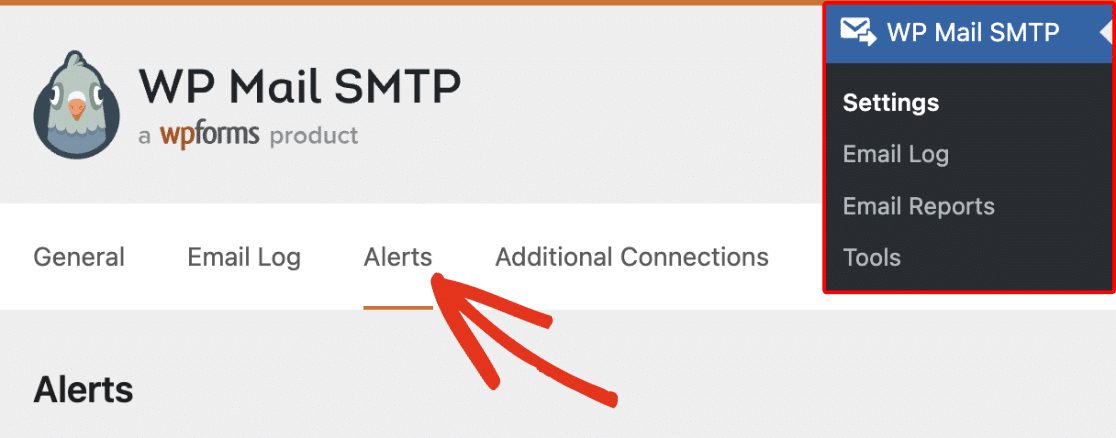
Once here, scroll down to the Push Notifications section. Then, toggle the Push Notifications Alerts option to the ON position.

Enabling Push Notifications
After that, click the Enable push notifications on this device button to proceed.
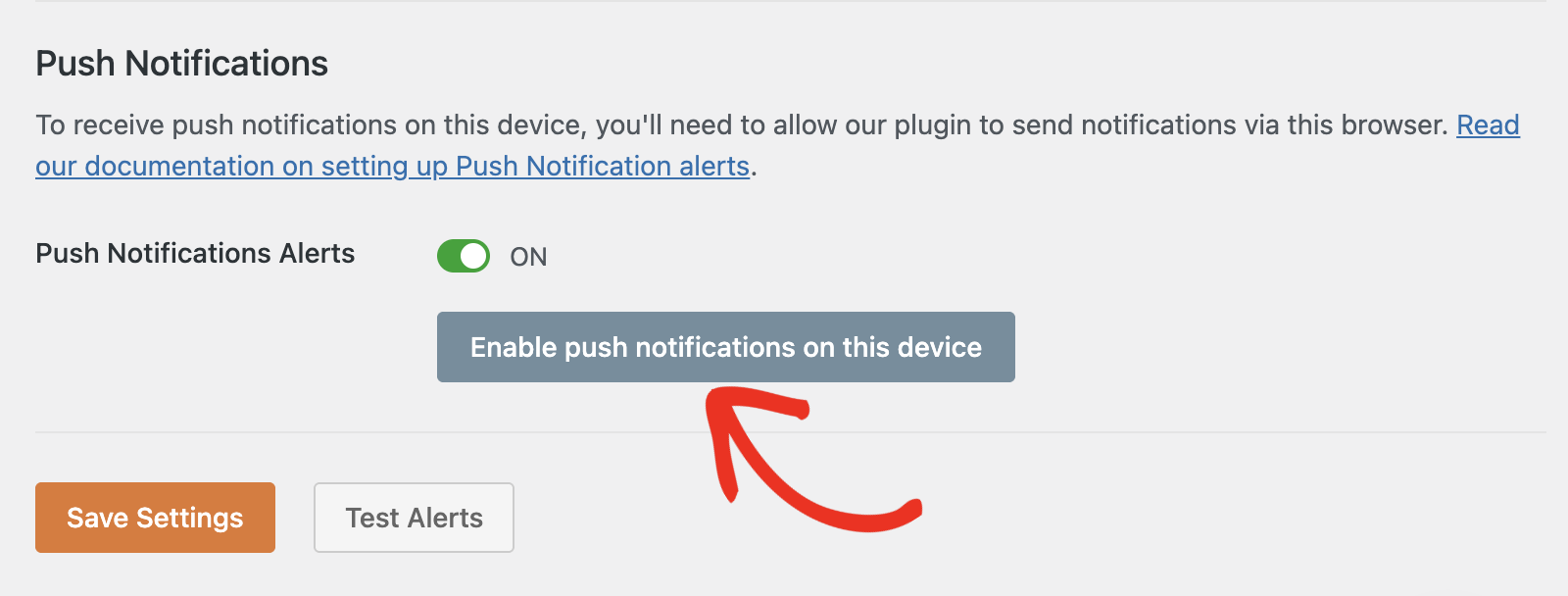
A pop-up will appear below the address bar on your browser. Go ahead and click Allow to enable push notifications for the browser.

Note: If you mistakenly choose Block, you won’t receive push alerts on that device. However, you can reset your selection. See our FAQ for more details.
You’ll see your browser’s user agent added as the value for the Connection Name field. You can update the value of this field to any name you’d like.
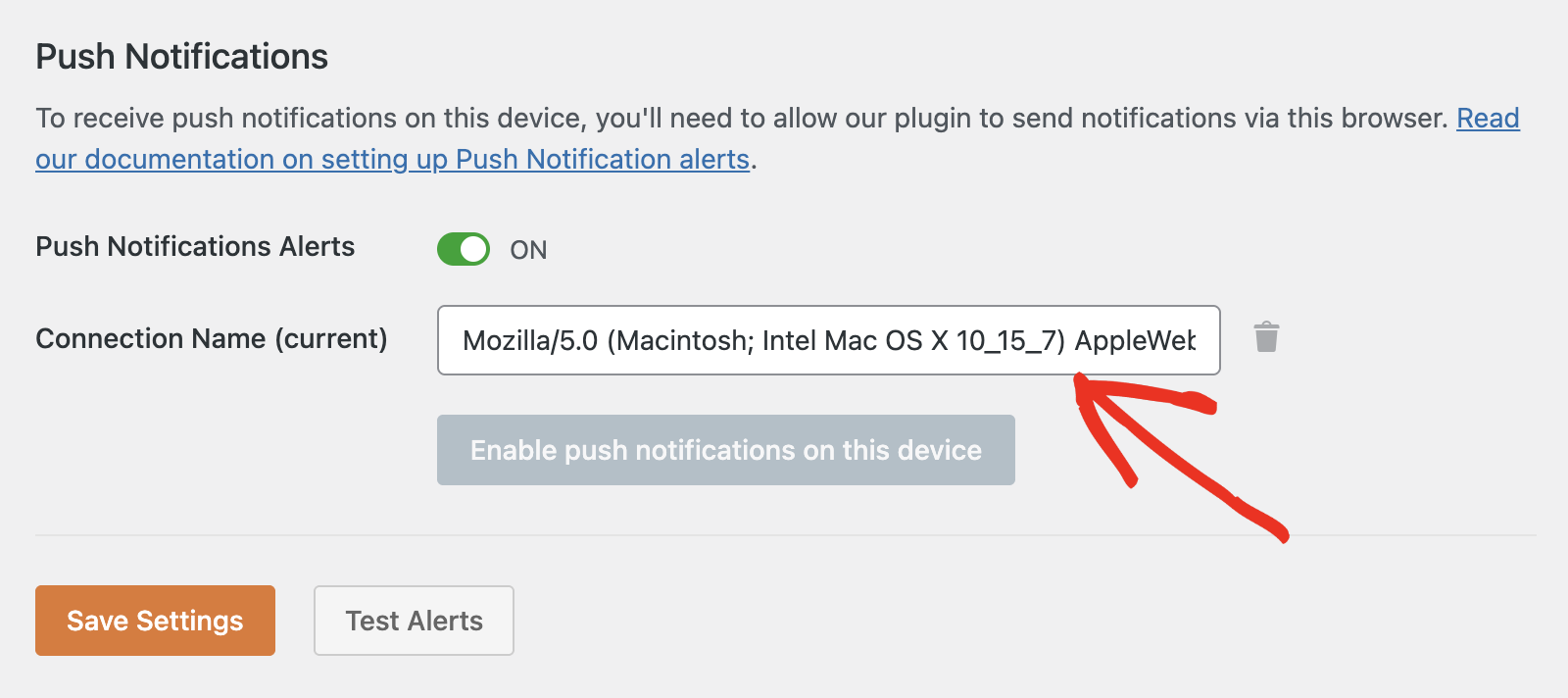
The Enable push notifications on this device button will be disabled after enabling push notifications on that device. However, you can add another push notification channel by accessing your site on a different browser or device.
On the new device, simply click Enable push notifications on this device and allow the browser access to your site.
Enabling Push Notifications on iPhone
If you use an iPhone device to access the Alerts screen, you won’t be able to enable push notifications by default.
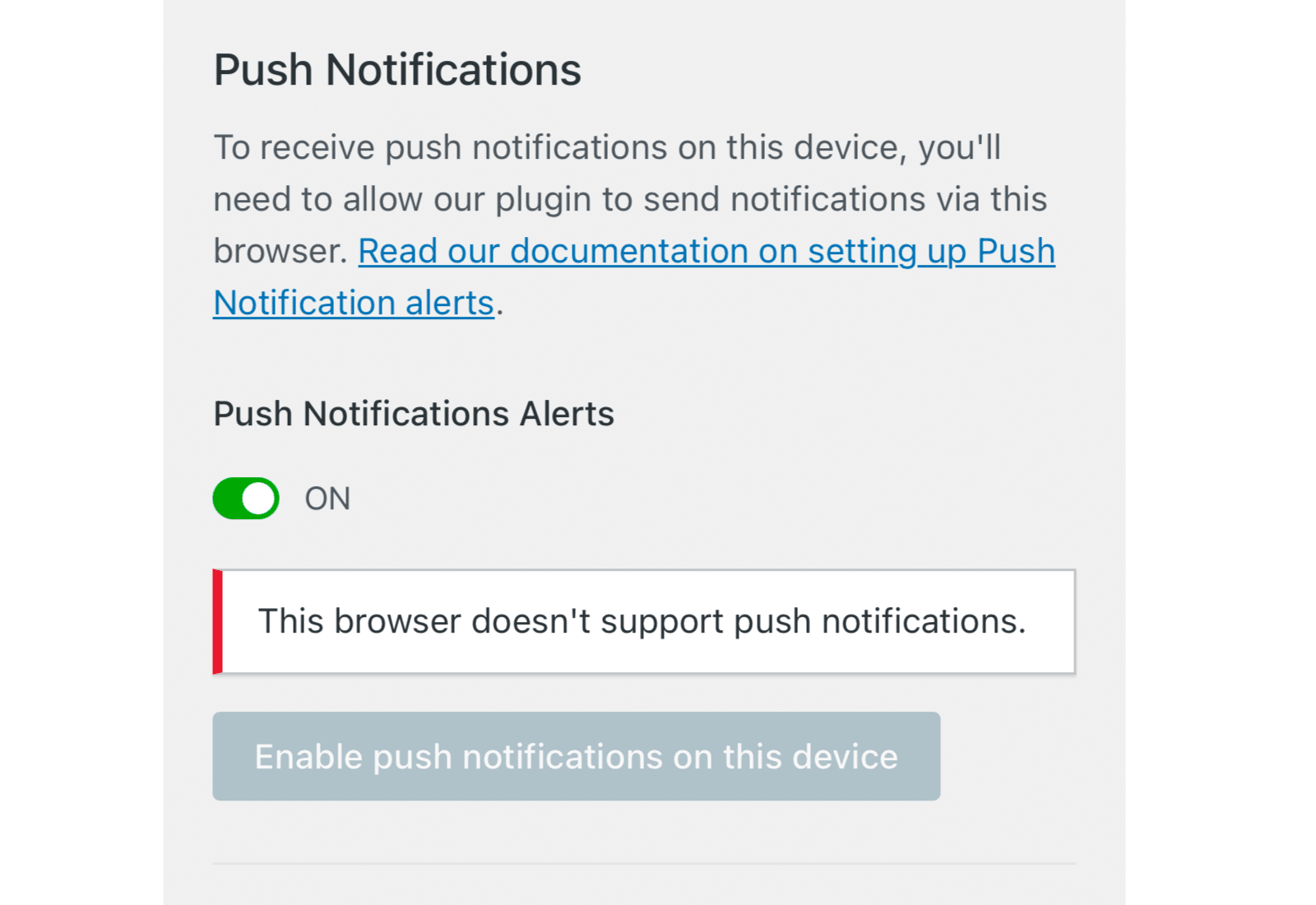
However, there is a straightforward workaround to fix the issue. For this, navigate to WP Mail SMTP » Settings and make sure to select the Alerts tab. Next, click on the Share icon on your iPhone browser.
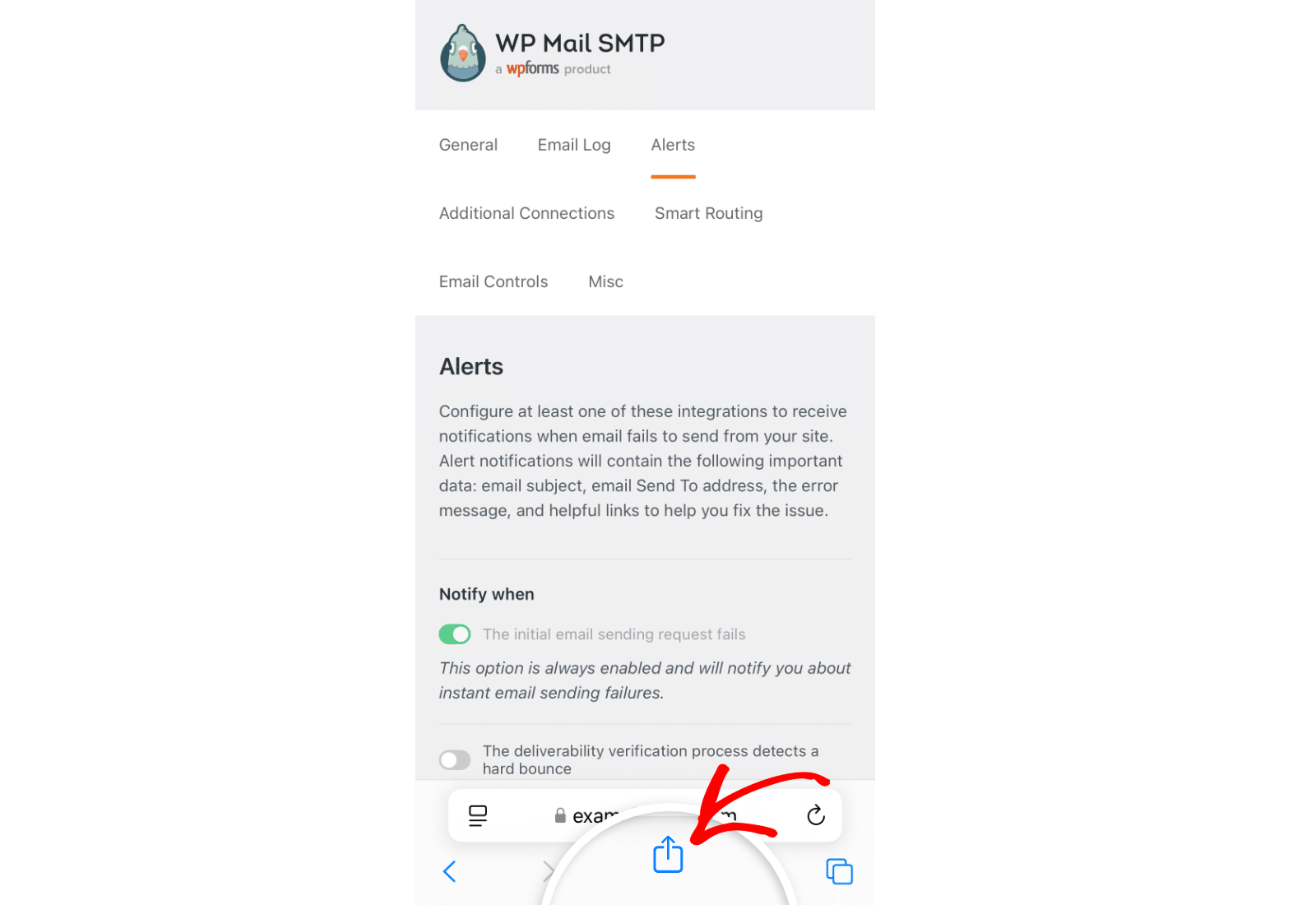
After that, scroll down and select Add to Home Screen.
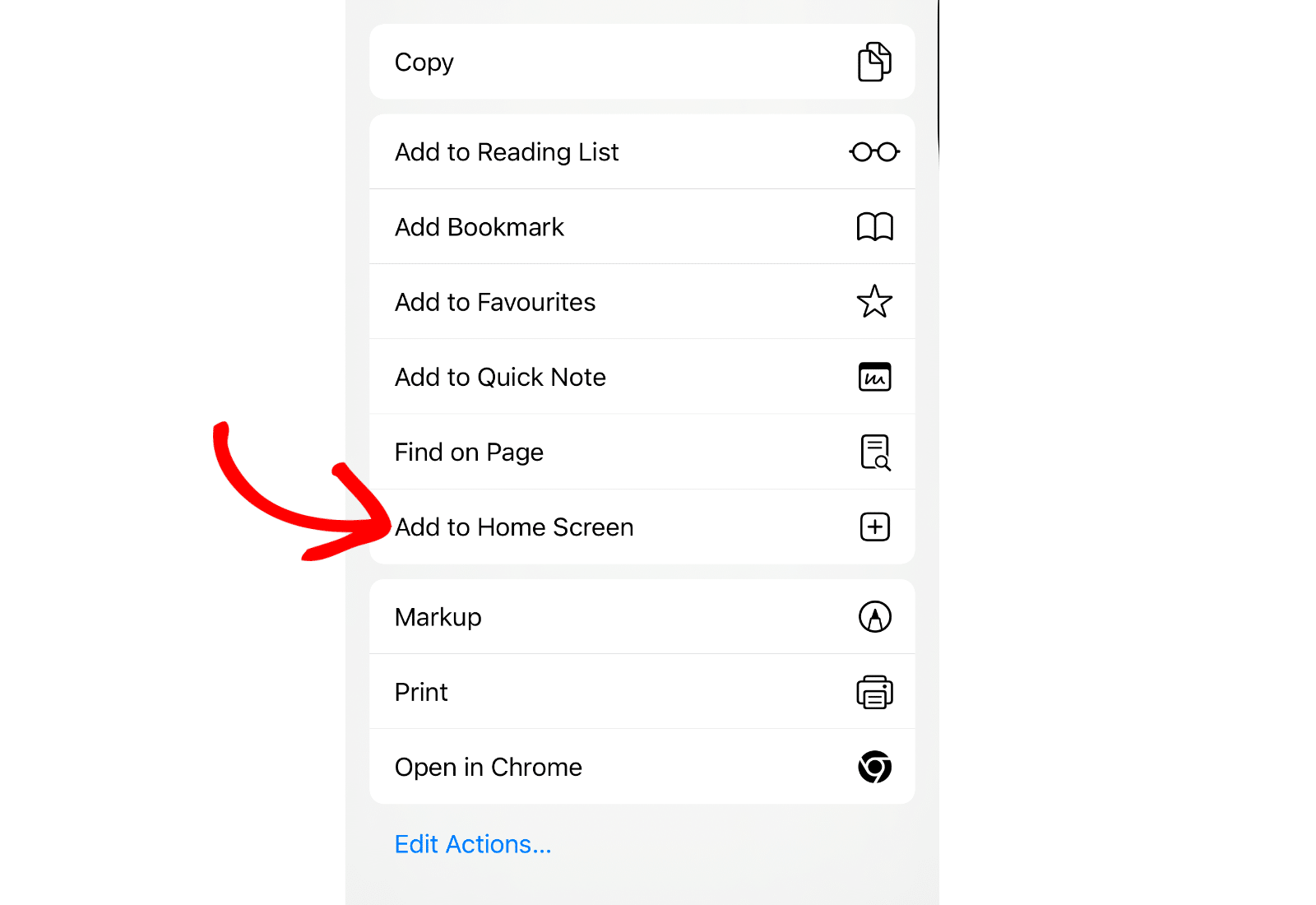
This will create an app icon on your home screen to access the Alerts settings page. Go ahead and click on the icon to open your site’s settings page.
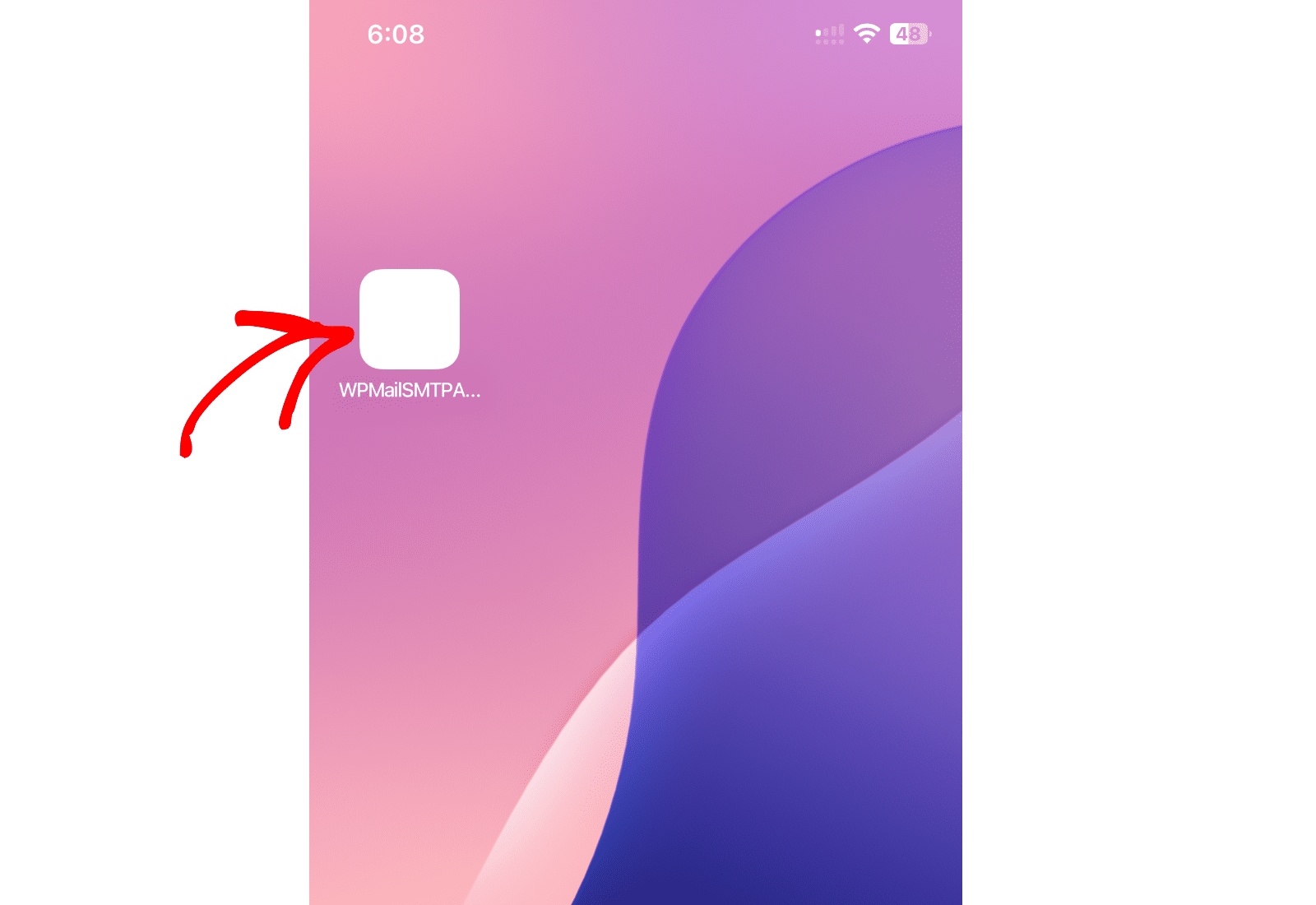
After clicking on it, you’ll be directed to the Alerts screen. From here, scroll to the Push Notifications section and click the Enable push notifications on this device button.
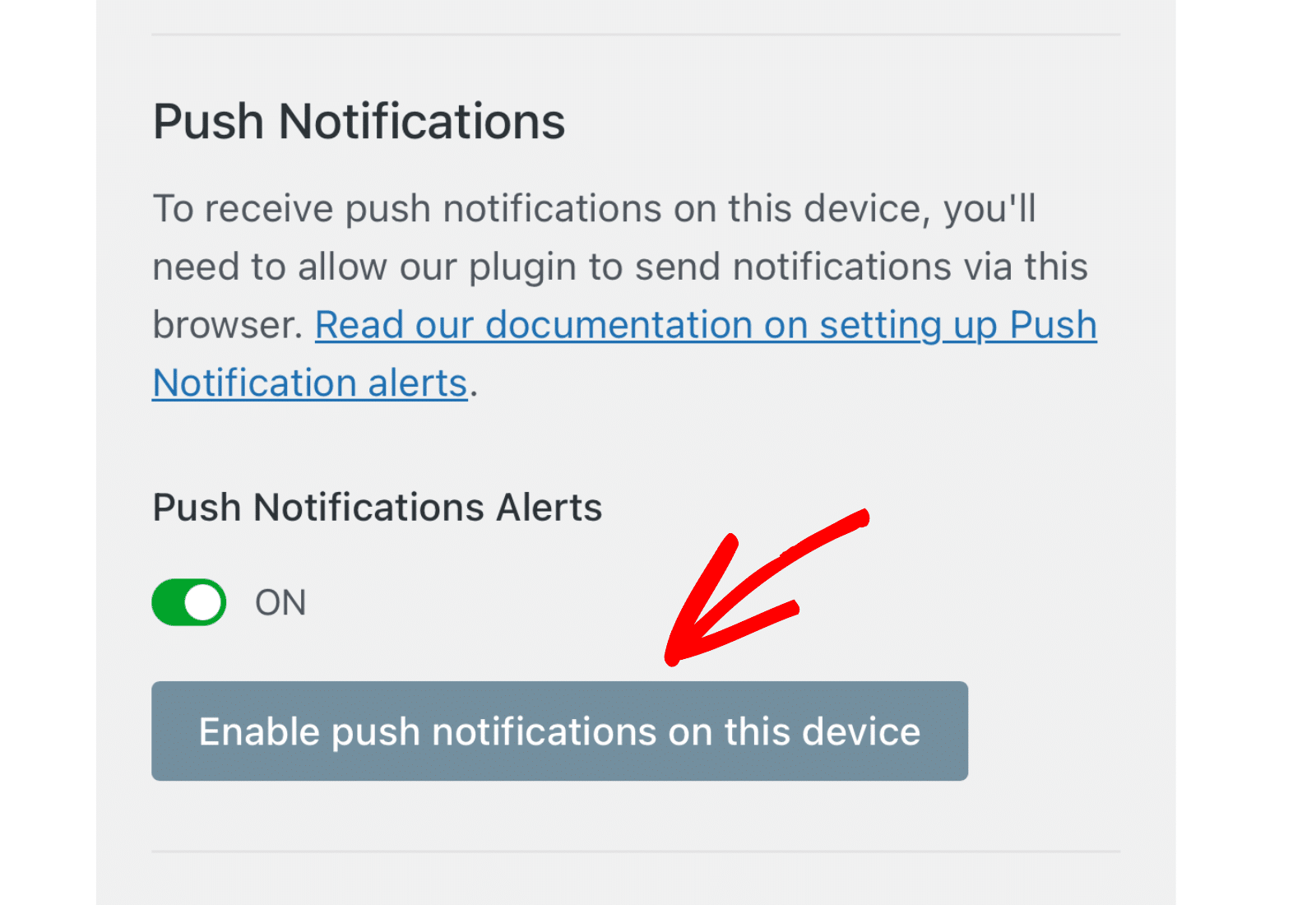
Then select Allow to enable it.
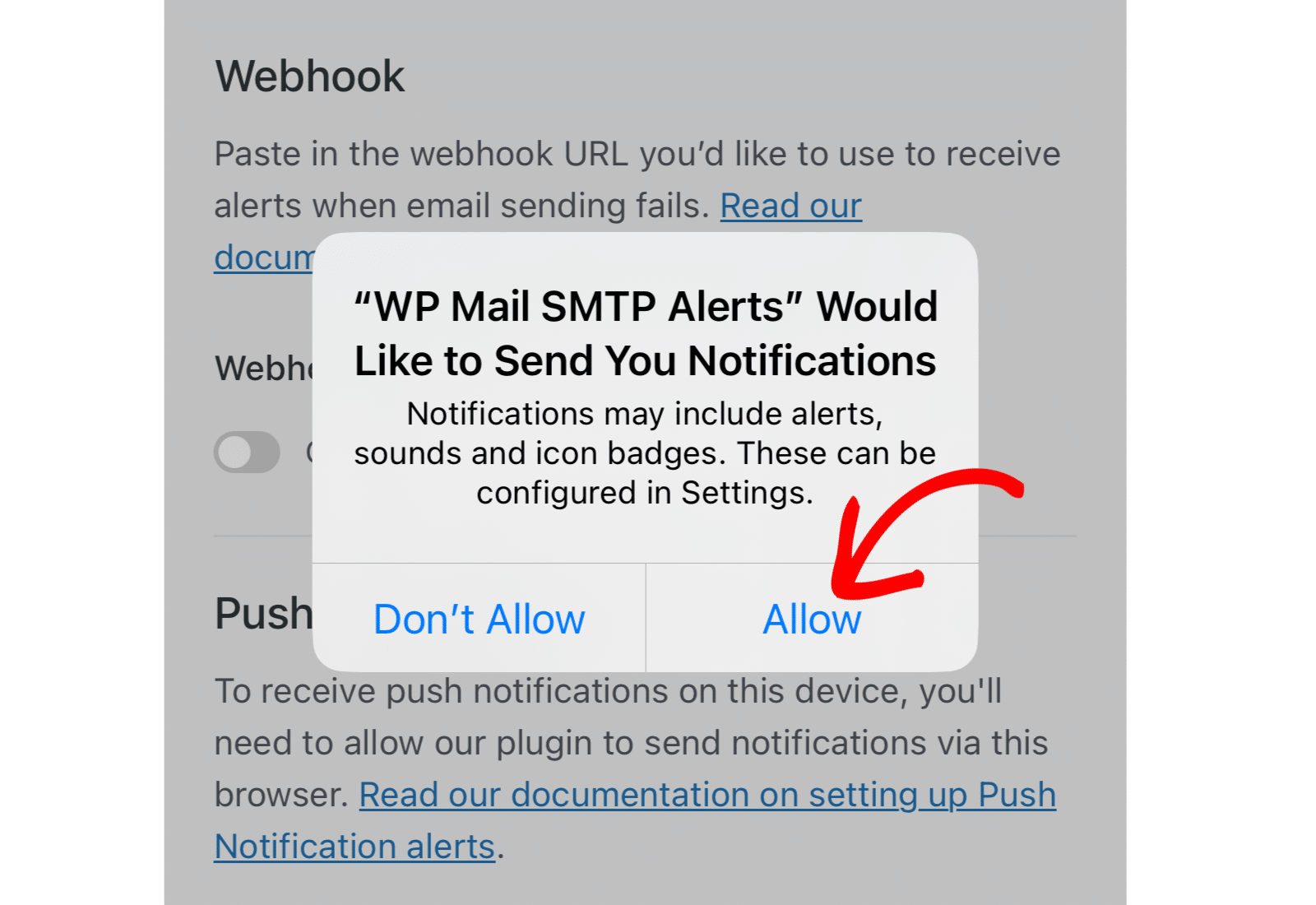
Once you’ve finished setting up your push notification integrations, either save your settings or continue to add other integrations. To save your settings, scroll down and click the Save Settings button.

If everything is properly configured, you’ll get a push notification on your browser whenever your site fails to send an email. You can click the Test Alerts button to confirm your configuration.
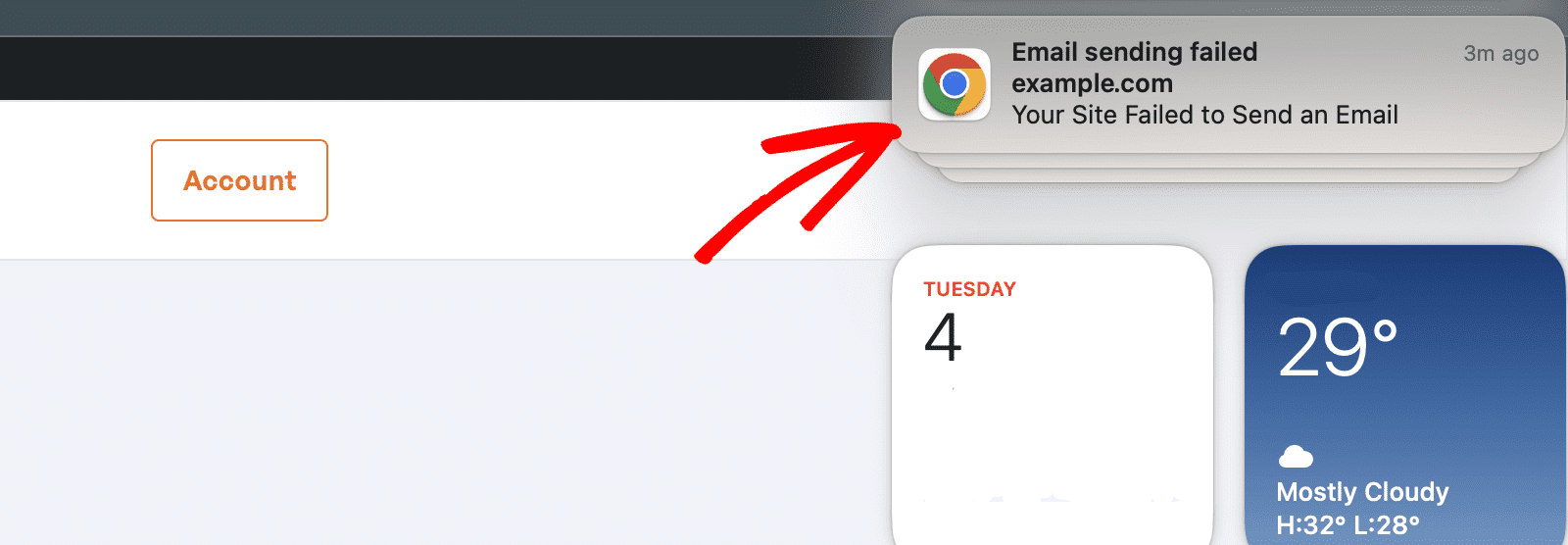
Here’s how it looks on mobile devices as well.
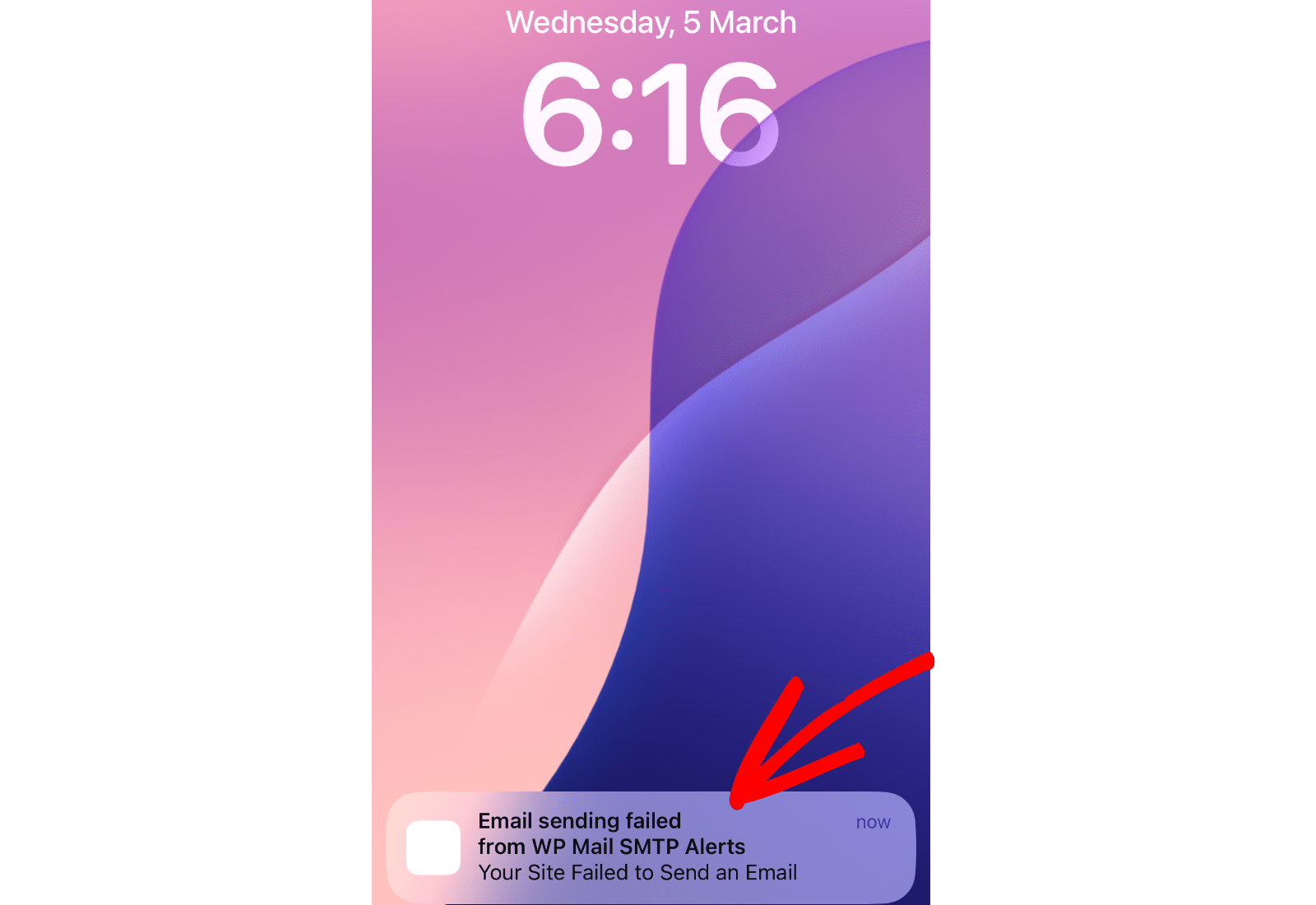
Frequently Asked Questions
These are answers to some of the top questions we see about enabling Push Notifications in WP Mail SMTP.
I mistakenly selected ‘Block’ instead of ‘Allow’ when enabling push notifications. How do I reset my selection?
To reset your site’s notification settings, you’ll need to first remove it from the disallowed list. We’ll use Google Chrome as an example. But the steps are similar for most modern browsers.
In Chrome, open your browser settings, then select the Privacy and security tab. Next, click on the Site settings option.
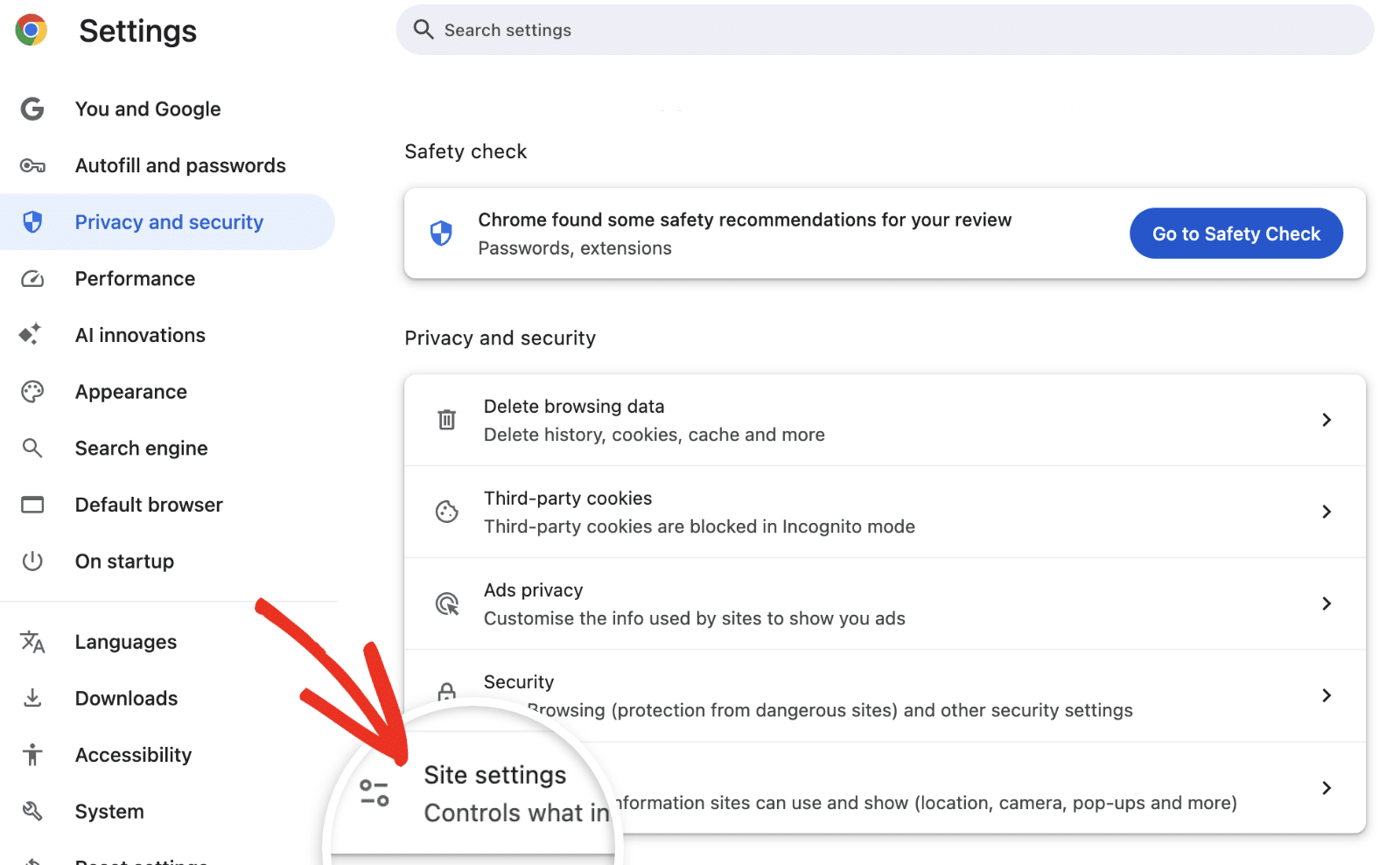
Under Permissions, select the Notifications option.
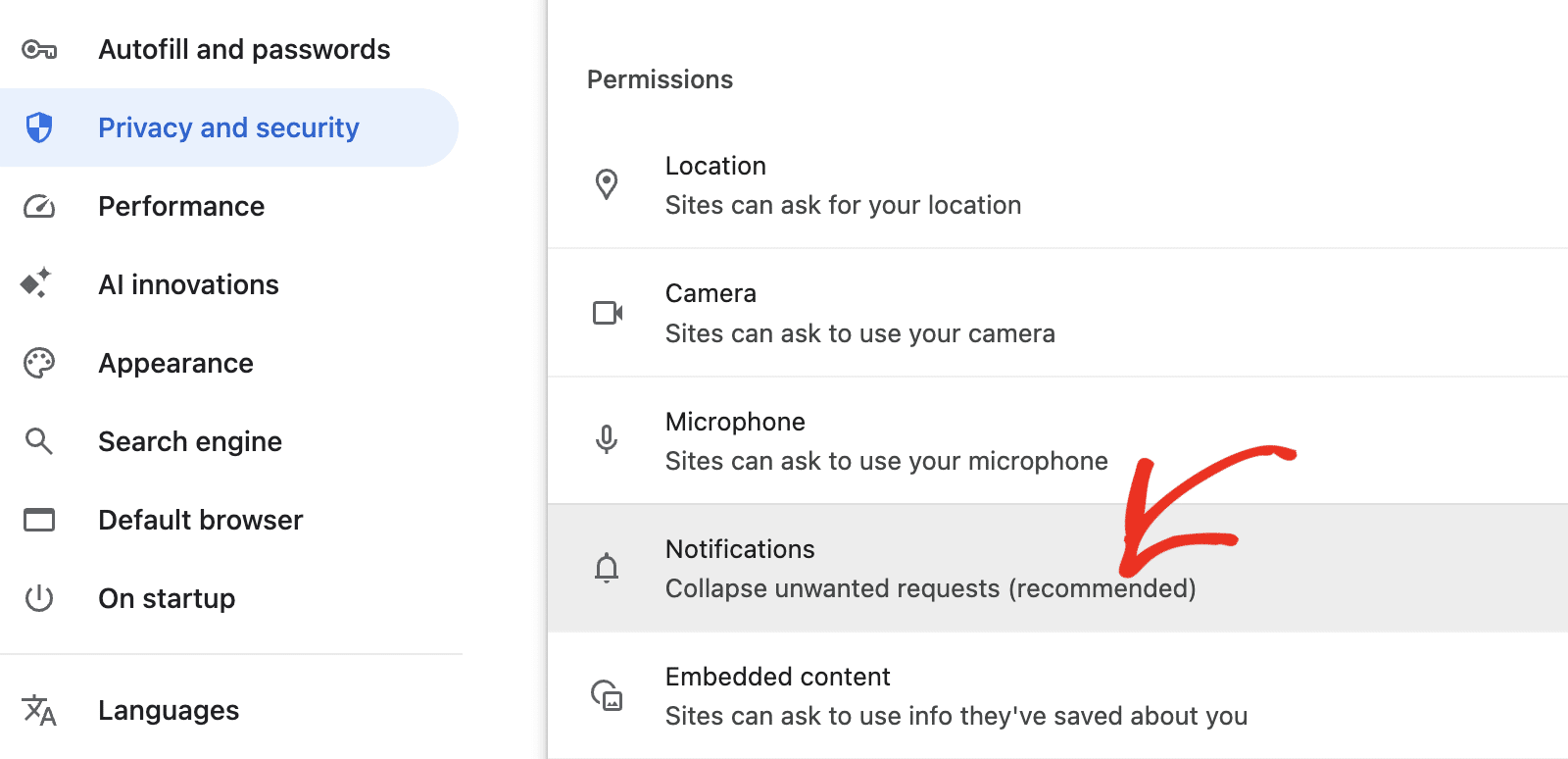
Then scroll down to the Not allowed to send notifications section and remove your site from the list.

Note: You can follow the same procedure to remove your site from the disallowed list on Firefox.
For Safari users, open your browser settings screen, then navigate to Websites » Notifications.
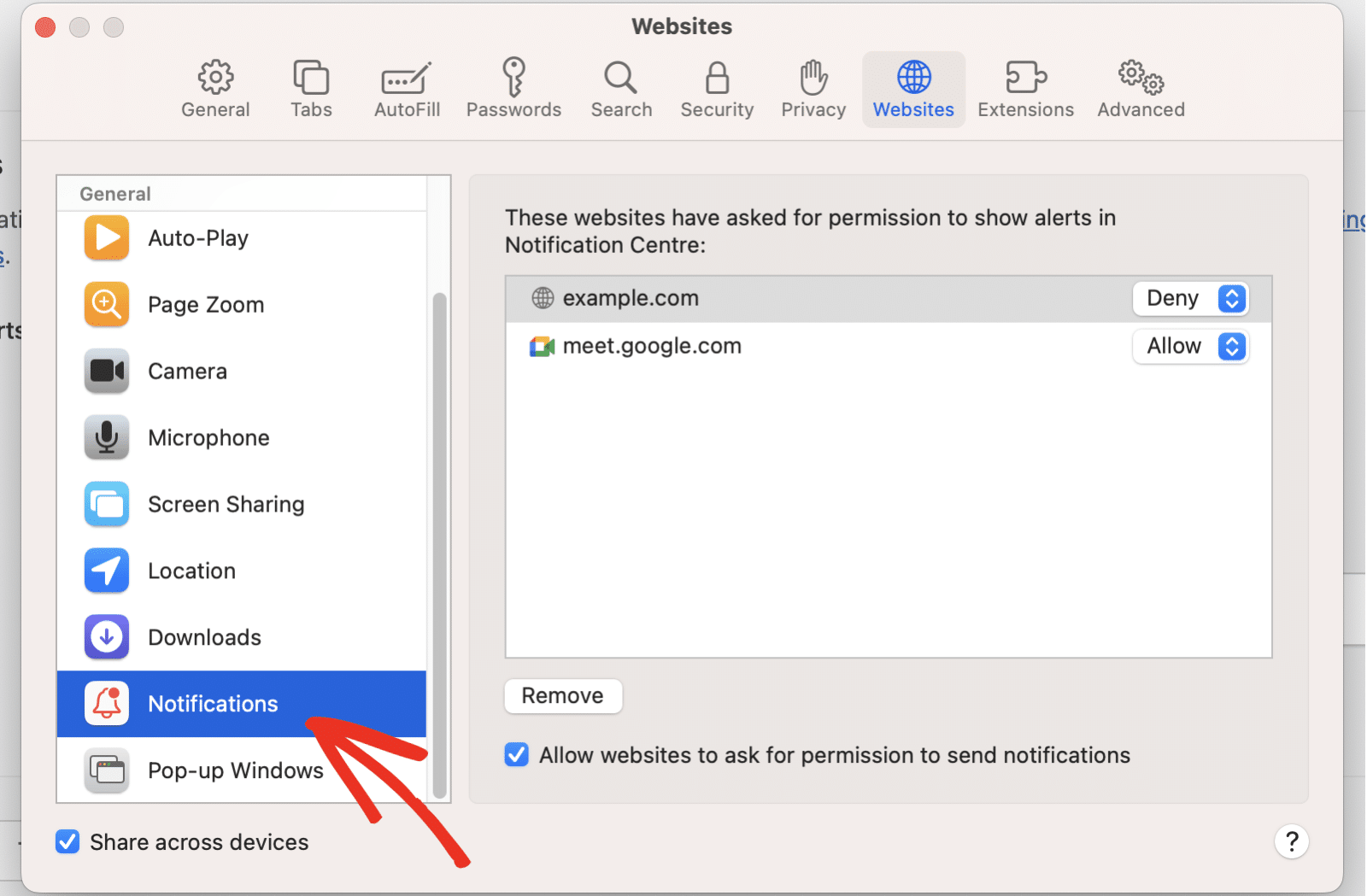
Next, select your website and click Remove.
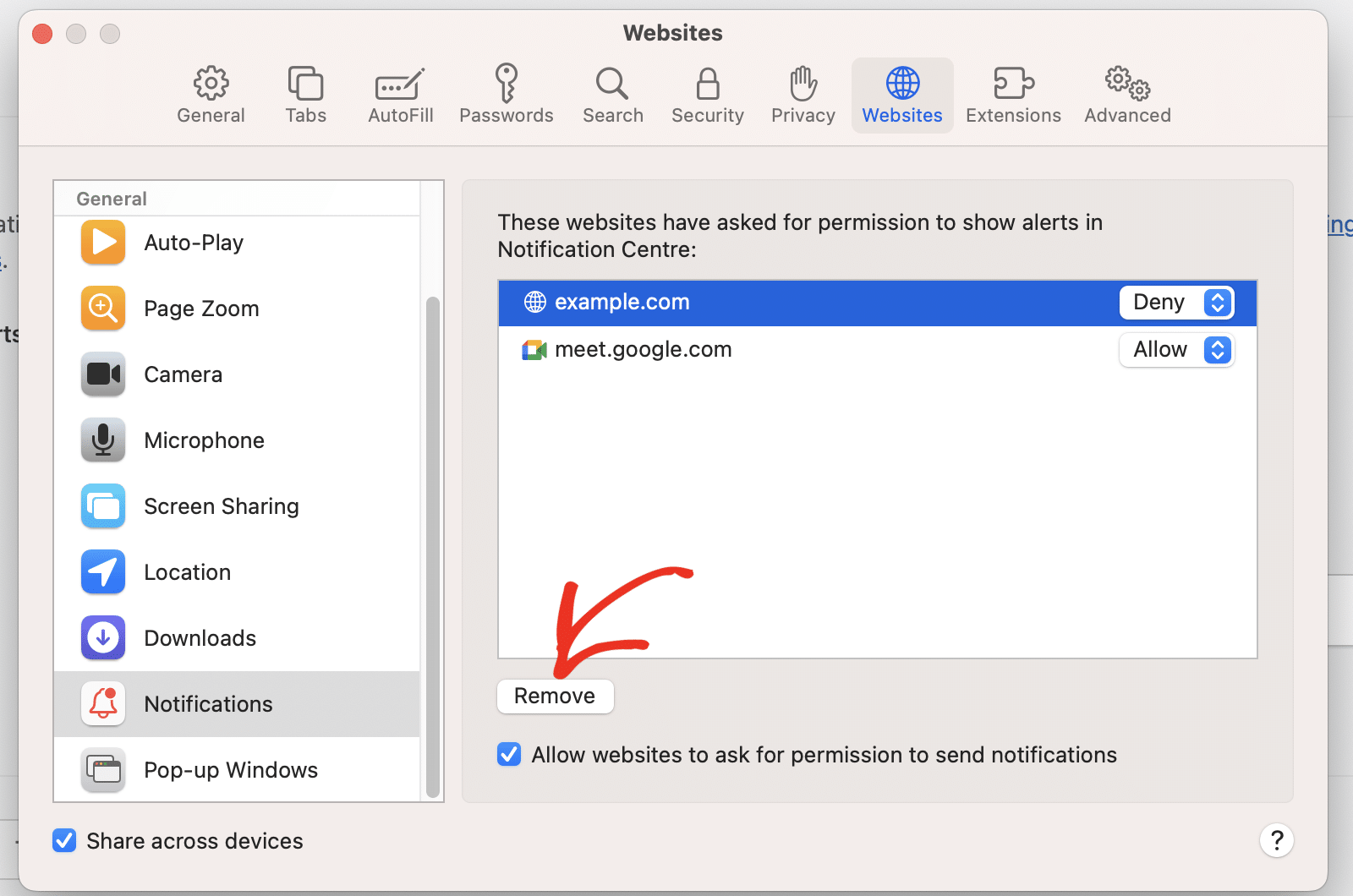
After removing your site, return to your WP Mail SMTP settings page and follow the procedure listed above to enable push notifications on your site. Make sure to select Allow when the browser popup appears.
I enabled push notifications on my site. Why are push alerts not coming through?
This can occur due to a variety of reasons, including operating system settings and browser-related causes. We’ve written a complete troubleshooting guide that addresses some of the common causes of the issue of push notifications not sending.
That’s it! You’ve now learned how to configure push notification alerts in WP Mail SMTP.
Next, would you like to configure multiple connections? See our tutorial to learn how to configure additional connections in WP Mail SMTP.
